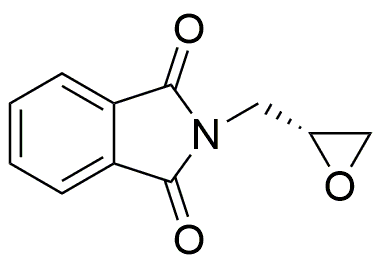(R)-N-Glycidylphthalimide is widely utilized in research focused on:
- Polymer Chemistry: This compound serves as a versatile epoxy resin hardener, enhancing the mechanical properties of polymers used in coatings and adhesives.
- Pharmaceutical Development: It is employed in the synthesis of pharmaceutical intermediates, aiding in the development of new drugs with improved efficacy.
- Material Science: The compound is used to modify surfaces, providing better adhesion and durability in various materials, including composites and textiles.
- Electronics: Its application in the production of electronic components helps in creating reliable insulation materials that withstand high temperatures.
- Environmental Applications: (R)-N-Glycidylphthalimide is explored for use in biodegradable materials, contributing to sustainable practices in packaging and product design.
General Information
Properties
Safety and Regulations
Applications
(R)-N-Glycidylphthalimide is widely utilized in research focused on:
- Polymer Chemistry: This compound serves as a versatile epoxy resin hardener, enhancing the mechanical properties of polymers used in coatings and adhesives.
- Pharmaceutical Development: It is employed in the synthesis of pharmaceutical intermediates, aiding in the development of new drugs with improved efficacy.
- Material Science: The compound is used to modify surfaces, providing better adhesion and durability in various materials, including composites and textiles.
- Electronics: Its application in the production of electronic components helps in creating reliable insulation materials that withstand high temperatures.
- Environmental Applications: (R)-N-Glycidylphthalimide is explored for use in biodegradable materials, contributing to sustainable practices in packaging and product design.
Documents
Safety Data Sheets (SDS)
The SDS provides comprehensive safety information on handling, storage, and disposal of the product.
Product Specification (PS)
The PS provides a comprehensive breakdown of the product’s properties, including chemical composition, physical state, purity, and storage requirements. It also details acceptable quality ranges and the product's intended applications.
Certificates of Analysis (COA)
Search for Certificates of Analysis (COA) by entering the products Lot Number. Lot and Batch Numbers can be found on a product’s label following the words ‘Lot’ or ‘Batch’.
*Catalog Number
*Lot Number
Certificates Of Origin (COO)
This COO confirms the country where the product was manufactured, and also details the materials and components used in it and whether it is derived from natural, synthetic, or other specific sources. This certificate may be required for customs, trade, and regulatory compliance.
*Catalog Number
*Lot Number
Safety Data Sheets (SDS)
The SDS provides comprehensive safety information on handling, storage, and disposal of the product.
DownloadProduct Specification (PS)
The PS provides a comprehensive breakdown of the product’s properties, including chemical composition, physical state, purity, and storage requirements. It also details acceptable quality ranges and the product's intended applications.
DownloadCertificates of Analysis (COA)
Search for Certificates of Analysis (COA) by entering the products Lot Number. Lot and Batch Numbers can be found on a product’s label following the words ‘Lot’ or ‘Batch’.
*Catalog Number
*Lot Number
Certificates Of Origin (COO)
This COO confirms the country where the product was manufactured, and also details the materials and components used in it and whether it is derived from natural, synthetic, or other specific sources. This certificate may be required for customs, trade, and regulatory compliance.


